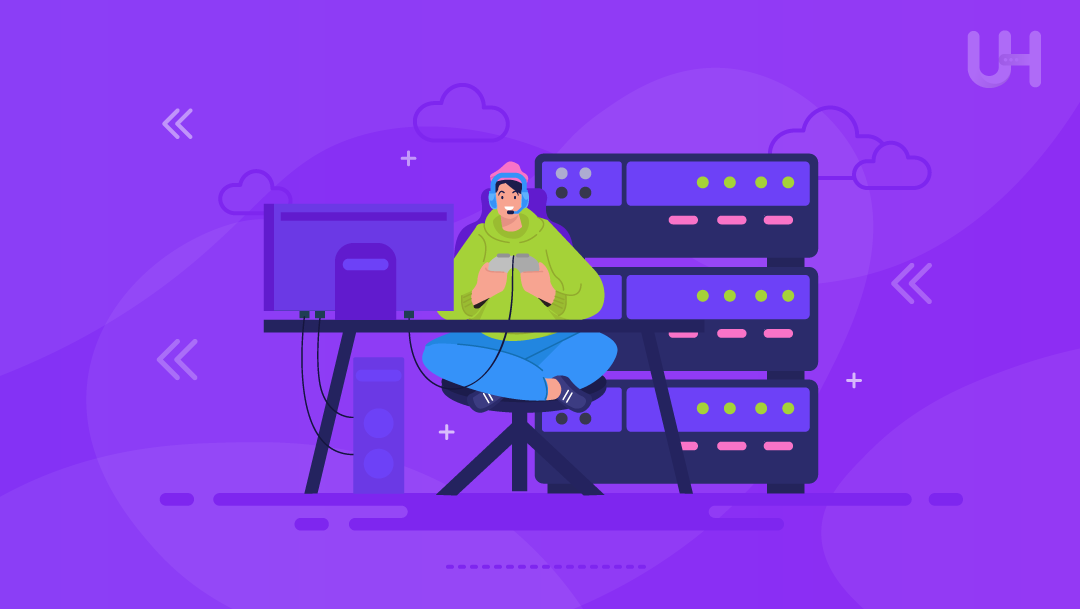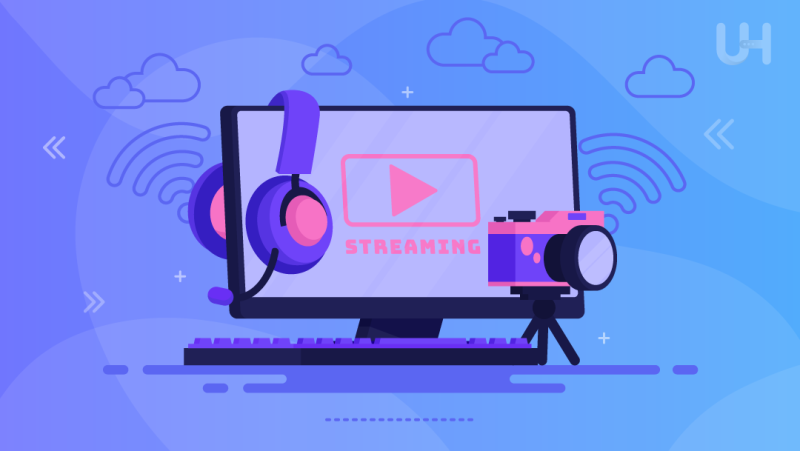Streaming in media refers to a continuous process of transmission of audio, video, or any other types of media content online. Online media streaming is an access mode where you can view videos or listen to music directly from the Internet without going through the download process for these files first. You can stream on YouTube, Netflix, or Spotify. It allows instant access to entertainment without waiting for downloads.
In this blog, we will discuss how streaming works and what options are available. You don’t need any prior knowledge to follow along. By the end, you’ll feel more confident using streaming services.
The Evolution of Streaming
In the past, media files had to be downloaded onto your device before watching or listening to them. All this took a little time and space on your device. Streaming came to change this by allowing users to access real-time content. The content is delivered and played without the need to be downloaded. The shift made it quicker and easier to consume media.
Key milestones in streaming include the launch of YouTube in 2005, which popularized video content streaming. Netflix’s transition to streaming in 2007, revolutionised how we watch TV shows and movies. Spotify, launched in 2008, did the same for music. These developments have disrupted traditional media like TV, radio, and cinema by giving users more control over what they watch or listen to and when. These transitions lead to a decline in traditional media viewership.
How Streaming Works
Streaming works on the principle where the media data, in audio or video content, is fragmented into smaller packets. These packets are sent over the internet to your device in real-time. Once the device starts receiving the packets, it will start playing the content without needing to wait for the whole file. This, in turn, provides almost instant access to the media. At the same time, more packets are continuously delivered in the background. The process depends on internet speed and fast data transfer to ensure a smooth experience.
Different protocols for streaming regulate this data transfer. A good example is how video streaming uses HLS (HTTP Live Streaming). This is because HLS automatically adjusts changes in internet speed to ensure a more stable experience. The commonly used protocol for live streaming is RTMP due to its low network latency.
Streaming involves the ability to cope with the variability of the network. If your internet goes up and down, it means that most of the streaming services will automatically adjust the quality of the media to meet the available bandwidth. That is why you sometimes feel that the resolution of your video is dropping when the internet is slow; nevertheless, at least your content keeps playing without disturbance.
Ready to Enhance Your Streaming Experience?
Whether you’re new to streaming or looking to improve your current setup, having reliable hosting is key to smooth, uninterrupted viewing. Explore Ultahost today and take your streaming to the next level!
Types of Streaming Services
Let’s discuss the types of streaming services in detail:
Video Streaming
The on-demand site enables one to view online TV shows, movies, and videos. On-demand sites, such as Netflix, Hulu, and Disney+, give one personal choice on what to watch and when. You can view the large library of content whenever you want and never have to wait for something at its scheduled broadcast time. These platforms mostly offer evergreen content and offer a variety of genres, which suit different tastes.
Live streaming services using social media network hosting, such as Twitch and YouTube Live, feature live broadcasts. For example, Twitch has become very popular for its live computer game streaming. In online gaming, gamers provide commentary. Their audience watches the gameplay and comments in real time. YouTube Live features live news events, concerts, and other content in real-time. Through live streaming, audiences can witness an event and participate in it right at the moment through social media.
Audio Streaming
The best for music enthusiasts are audio streaming services. Using any of these services, like Spotify, Apple Music, or Amazon Music, lets you play millions of songs and albums. You’ll be able to create playlists and follow your favourite artists to discover new music without having to download any files. Many services do provide recommendations based on your preferences for customized music listening.
Meanwhile, for podcast listeners, an entire world of podcasts on any subject is available on Google Podcasts and Stitcher. By selecting true genre crime, comedy, or self-improvement can have episodes streamed right to your device and listen on demand. Podcasters using Internet Radio Hosting can deliver convenience to listeners who cannot consume a great deal of content during daily activities.
Game Streaming

These days, gaming streaming using dedicated gaming hosting has evolved with the uprising of platforms like Twitch and Mixer. Twitch is the most extended platform where gamers stream their gameplay. They interact with their audience and build their committed communities based on interests. Mixer was another popular platform, recently merged into Facebook Gaming. It allows similar functionalities: live game streaming and community engagement.
Cloud gaming services, including Google Stadia and Xbox Cloud Gaming, are revolutionizing the way we consume video games. These services allow users to stream games directly to their devices, without the need for any powerful console or PC. This brings quality games to your web browser or app with greater accessibility and flexibility.
Niche Streaming Services
Niche streaming services are those that cater to very specific interests and genres. An example might be websites dedicated to anime and manga, like Crunchyroll. It provides an enormous library of Japanese animated series and comics. The service, like CuriosityStream, could also stream documentaries and other learning programs. It offers in-depth documentaries covering a wide array of subjects. It attracts highly targeted and devoted groups of fans and enthusiasts.
For each kind of streaming, the services have a certain benefit. Whether movie watching, music listening, gameplay, or even self-indulgence in certain genres, there is a streaming service that meets your taste and interest.
Devices and Platforms for Streaming
The most common devices used for streaming include smartphones, tablets, and laptops. This is because these devices will help you access applications and websites streaming from any place. This makes it easy to watch videos, music, and also live streams when on the move.
The viewing experience at home becomes all the more enchanting with smart TVs and devices for streaming. Smart TVs would come with inbuilt applications for these streaming services, such as Netflix and Disney, and you can watch directly on your TV. For those who have a normal TV, Apple TV, Roku, Chromecast, and Amazon Fire Stick are able to make it smart by connecting to the internet and accessing a host of streaming platforms. Such an ability to stream is also made possible by game consoles like the PS5 and Xbox. This aside from gaming, let you watch movies and shows. The new devices in the streaming arena are VR headsets and smart speakers, offering new ways to experience content and interact with media.
Internet Speed and Bandwidth Requirements
To enjoy smooth streaming, different types of content require varying internet speeds. For standard definition (SD) video, a speed of about 3-4 Mbps is usually sufficient. High-definition (HD) content needs around 5-8 Mbps. 4K video requires a much higher speed, often 25 Mbps or more. Live streaming can vary depending on the quality and platform. It typically needs a stable connection with a speed similar to HD or higher.
Unlimited bandwidth is very important, especially when multiple users are using the internet at the same time. Where there are multiple people streaming videos, playing online games, or utilizing any other internet-heavy services all at once, things get a little testy in terms of poor quality and buffering, or lag. Note that your router should be updated and centrally located to ensure strong signal coverage.
Free vs Paid Streaming Services
As the world of online media streaming continues to grow, consumers are faced with the choice between free and paid streaming services. Each type offers distinct benefits, and understanding the differences can help users decide which option aligns best with their needs.
Free Streaming Services
Free streaming services are appealing to those who want to access a variety of content without committing to a subscription fee. Platforms like YouTube, Tubi, Crackle, and Peacock (free tier) are popular options that allow viewers to stream movies, TV shows, and user-generated content at no cost.
However, free services often come with limitations that affect the overall viewing experience:
- Ad-Supported Content: Free streaming platforms are typically supported by ads, which can disrupt the user experience. Advertisements can appear before, during, and after content, with the frequency and length of ads varying by platform. While some users may tolerate ads in exchange for free content, others may find it frustrating, especially during long movies or watching sessions.
- Content Availability: Free streaming services generally offer a smaller, less current library compared to paid alternatives. While viewers can access classic films, older TV series, and user-generated content, they are unlikely to find the latest blockbuster movies or trending shows. Many free platforms have licensing agreements that limit the availability of new or exclusive content.
- Lower Quality Streaming: Free streaming services often provide lower video and audio quality compared to paid services. In many cases, the resolution may be capped at 720p or lower, and the sound quality may not match that of high-definition or surround sound found on premium platforms.
- Limited Features: Free platforms generally lack the extra features available with paid services, such as offline downloads, multiple user profiles, and parental controls. Additionally, some free services restrict the number of devices that can be used simultaneously, which can be inconvenient for families or households with multiple viewers.
Despite these limitations, free streaming services are ideal for users who are budget-conscious or simply want to sample content without committing to a subscription. They are also a good option for exploring niche content that may not be available on paid platforms.
Paid Streaming Services
Paid streaming services like Netflix, Hulu, Amazon Prime Video, and Disney+ come with a subscription fee, but they offer significant advantages in terms of content, quality, and overall experience. Here’s what users can expect from paid platforms:
- Ad-Free Experience: Most paid streaming services offer an ad-free experience, allowing users to enjoy uninterrupted content. This is particularly beneficial for those who value a smooth viewing experience, especially during long shows or movies. Some platforms, such as Hulu, offer ad-supported tiers at a lower cost, but premium subscriptions are generally ad-free.
- Access to Exclusive and Premium Content: Paid streaming services are known for offering exclusive content that cannot be found on free platforms. This includes original programming, blockbuster movies, and new releases. Services like Netflix and Amazon Prime Video invest heavily in creating high-quality, original content that attracts viewers and builds brand loyalty. For viewers who want access to the latest shows or critically acclaimed series, paid platforms are the way to go.
- Higher Video and Audio Quality: Paid streaming services typically offer superior video and audio quality, with many platforms supporting HD, 4K, and even HDR streaming. This ensures a more immersive experience, especially for users with high-end home entertainment systems. Additionally, the audio quality is often optimized for surround sound, enhancing the overall viewing experience.
- Customization and Flexibility: Many paid services offer customizable plans, allowing users to choose the level of service that suits their needs. For example, platforms like Netflix and Hulu have different tiers, with higher-priced plans offering additional screens, higher video quality, and other premium features.
Which Is Right for You?
The choice between free and paid streaming services depends on a variety of factors, including budget, content preferences, and viewing habits. Free services are ideal for casual viewers or those looking for budget-friendly options, while paid services are better suited to those who prioritize high-quality content, exclusive programming, and a seamless viewing experience.
Start Streaming with Reliable Hosting!
Kick off your streaming journey with UltaHost’s VDS Hosting. Affordable, secure, and perfect for beginners, it offers everything you need to stream seamlessly. Explore UltaHost today and get started with the right hosting solution!
Choosing the Right Streaming Service
When it comes to choosing a streaming service, one important thing to think about is the diversity of content provided. Of course, there are those that focus on movies and TV series like Netflix and Hulu just to name a couple of big ones. Spotify and Apple Music are solely about music. For live events, YouTube Live and Twitch are great services one may want to consider. Also, make sure the kind of service appeals to your way of entertainment and delivers the genre you like.
Other factors involve the user interface and accessibility. Find one that is easy to use and integrates well with your devices, whether it be your smartphone, smart TV, or laptop. Secondly, do a price comparison to find a service that fits within your budget. Most services have a family plan or bundles, such as Hulu with Disney and ESPN, which are value-efficient when you need more than one subscription.
Streaming and Data Consumption
Streaming media can use a lot of data center, depending on the quality and type of content. Watching videos in standard definition (SD) uses less data compared to high definition (HD) and 4K content. For example, an HD video takes up something like 3 GB per hour while 4K could take up 7 GB. As for audio, this usage is generally low: high-quality music would take up approximately 0.5 GB per hour.
Data caps are also very important to manage to avoid additional charges from your internet service provider. Try reducing data use by lowering the resolution on these services or by enabling data-saving capabilities where available. If possible, plan high-data activities like HD streaming during off-peak times when your internet service provider may not count that data against your limit.
In that regard, many of these services allow you to download content offline, so that you might be able to view such content without necessarily using any data. Such a feature enables one to watch movies and shows while on the go or if not connected to a live internet connection. Just download your favorite content on Wi-Fi to save data and enjoy it anytime, anywhere.
Legal and Ethical Issues in Streaming
Using illegal streaming platforms poses significant risks and consequences for users, both in terms of security and legal repercussions. Engaging with these unauthorized services not only undermines the rights of content creators but also exposes users to potential malware and legal issues.
One of the most pressing concerns when using illegal streaming sites is the increased risk of malware. Many unauthorized platforms are riddled with malicious software that can infect your device, leading to serious security breaches. This malware can compromise personal data, damage files, or even take control of your system, causing long-term harm.
In addition to legal and security issues, users often face geographical restrictions when attempting to access content. Many legitimate streaming services implement geo-blocking to comply with licensing agreements and regional content rights. This means that certain content is only available in specific locations, and access is restricted based on the user’s geographical location. To bypass these restrictions, many individuals use Virtual Private Networks (VPNs) to mask their location and gain access to content not available in their region. For example, a common method for bypassing YouTube location restrictions is by using a VPN service. A VPN routes a user’s internet traffic through a server in a different location, making it appear as though they are browsing from that server’s country.
Live Streaming and Interactive Content
Live streaming is broadcasting video content in real-time over the internet. This means viewers can watch events as they happen, such as live sports, concerts, or news updates. Platforms like YouTube Live and Twitch are popular for live streaming, allowing people to tune in to live broadcasts from anywhere.
Interactive streaming takes engagement a step further by allowing viewers to interact with the content. On platforms like Twitch, viewers can participate in live chats and communicate directly with the streamer. YouTube Live also offers live comments and real-time reactions, making the viewing experience more interactive and engaging.
Content creators on streaming platforms can earn money in several ways. Donations from viewers provide direct support, while ads displayed during streams can generate revenue. Additionally, many streamers offer subscription options, where viewers pay a monthly fee for exclusive content or perks.
These monetization methods help content creators support their work and continue producing engaging streams. By combining live broadcasts with interactive features and various revenue streams, streaming platforms create dynamic and rewarding experiences for both creators and viewers.
Emerging Trends in Streaming

AI is reshaping the way streaming platforms recommend content by analyzing your viewing patterns to offer personalized suggestions. Services like Netflix and Amazon Prime Video use sophisticated algorithms to study what you watch, how long you watch, and which genres you prefer. This tailored approach allows users to discover new shows or movies that match their interests, keeping them more engaged. It also helps reduce the time spent searching for content, as recommendations become more aligned with individual preferences.
Cloud gaming is also revolutionizing the media landscape. Platforms such as Google Stadia and Xbox Cloud Gaming let users play high-quality games directly over the internet without the need for powerful gaming hardware. All the heavy computing is done on remote servers, allowing players to stream games seamlessly to their devices. This innovation makes gaming more accessible and introduces the potential for merging gaming and traditional streaming, where users could jump between watching a trailer and playing the game itself on the same platform.
Interactive TV shows are another exciting development, blending passive watching with active participation. Shows like Black Mirror: Bandersnatch on Netflix allow viewers to make choices that directly influence the storyline, offering a more immersive experience. This merging of gaming elements with traditional TV keeps viewers engaged and enhances the connection with the content.
The rollout of 5G networks will dramatically improve streaming quality by providing faster internet speeds and reducing buffering. With 5G, streaming platforms can offer higher resolutions like 4K and 8K, even in areas with weaker internet connections, leading to a smoother and more enjoyable experience.
Lastly, virtual reality (VR) and augmented reality (AR) are adding new layers of interactivity to streaming. VR immerses users in 360-degree environments, while AR overlays digital elements onto real-world scenes. Both technologies are set to redefine how viewers engage with content, offering more dynamic and personalized experiences.
With the rise of streaming services, individuals now have access to a vast range of content from almost any location, at any time, as long as they have an internet connection. This unprecedented level of convenience has fundamentally changed how people consume media. Gone are the days of waiting for specific times to catch a TV show or movie on traditional broadcast networks.
Moreover, the accessibility of streaming services is not limited to just timing and location. These platforms have made content available to a global audience, with regional restrictions becoming less of a barrier. People can access shows and movies from various countries, often with the help of subtitles and dubbing. This has allowed content to cross borders and reach new audiences that previously might have been inaccessible.
Additionally, streaming services have made efforts to improve accessibility for individuals with disabilities. Subtitles and closed captions are widely available, enabling individuals with hearing impairments to enjoy content without missing out on important dialogue or sound cues. Similarly, audio descriptions—narrations that describe what is happening visually on the screen—make it possible for people with visual impairments to follow along with the plot. This focus on inclusivity ensures that streaming services can reach a broader audience. It ensures that people with varying needs can still enjoy entertainment.
Conclusion
Streaming allows the viewer to view a media file in real time over the internet without needing to download large files first. Understand the basic way of how things work, including things like data usage and various service options to make an informed decision.
Streaming is the future of media, offering a more flexible and personalized way to consume content. It updates continuously, as new technologies and trends develop, with its latest efforts in improving entertainment experiences. With this, you’ll be joining an energetic, growing field: one that’s changing the way we think about our consumption of and interaction with media.
If you’re managing large-scale media files or running a streaming platform, consider investing in UltaHost’s Storage VPS for efficient, high-performance storage solutions tailored to your business needs.
FAQ
What is streaming?
Streaming is watching or listening to media in real-time over the internet without downloading.
How does streaming work?
Media is sent in small data packets over the internet, allowing instant play while more data is received.
What devices can I use to stream?
You can stream on smartphones, tablets, laptops, smart TVs, gaming consoles, or devices like Roku and Apple TV.
What internet speed do I need?
SD needs 3-4 Mbps, HD requires 5-8 Mbps, and 4K needs around 25 Mbps.
What’s the difference between free and paid streaming?
Paid services offer more content and fewer ads, while free services have ads and limited content.
Are free streaming services available?
Yes, services like YouTube, Pluto TV, and Crackle offer free, ad-supported streaming.
What’s the difference between streaming and downloading?
Streaming plays content in real-time, while downloading saves the file for later use.












